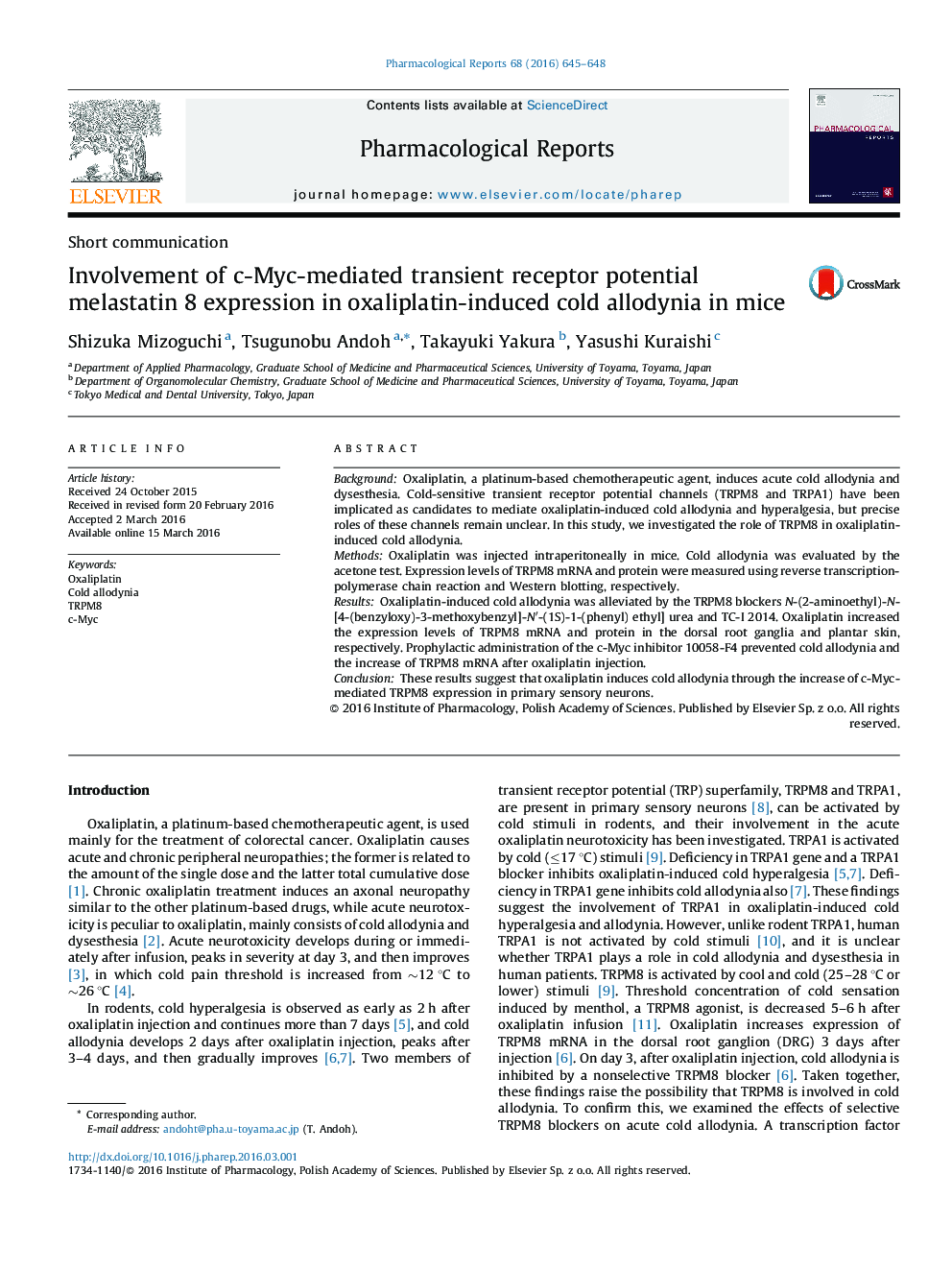| Article ID | Journal | Published Year | Pages | File Type |
|---|---|---|---|---|
| 2010664 | Pharmacological Reports | 2016 | 4 Pages |
•Oxaliplatin (OXP) elicited cold allodynia in mice.•OXP-induced cold allodynia was inhibited by TRPM8 antagonists.•OXP increased TRPM8 mRNA expression in the dorsal root ganglia.•OXP increased TRPM8 protein expression in the planter skin.•c-Myc inhibitor attenuated OXP-induced cold allodynia and TRPM8 mRNA expression.•OXPmay induce cold allodynia through the increase of TRPM8 in sensory neurons.
BackgroundOxaliplatin, a platinum-based chemotherapeutic agent, induces acute cold allodynia and dysesthesia. Cold-sensitive transient receptor potential channels (TRPM8 and TRPA1) have been implicated as candidates to mediate oxaliplatin-induced cold allodynia and hyperalgesia, but precise roles of these channels remain unclear. In this study, we investigated the role of TRPM8 in oxaliplatin-induced cold allodynia.MethodsOxaliplatin was injected intraperitoneally in mice. Cold allodynia was evaluated by the acetone test. Expression levels of TRPM8 mRNA and protein were measured using reverse transcription-polymerase chain reaction and Western blotting, respectively.ResultsOxaliplatin-induced cold allodynia was alleviated by the TRPM8 blockers N-(2-aminoethyl)-N-[4-(benzyloxy)-3-methoxybenzyl]-N′-(1S)-1-(phenyl) ethyl] urea and TC-I 2014. Oxaliplatin increased the expression levels of TRPM8 mRNA and protein in the dorsal root ganglia and plantar skin, respectively. Prophylactic administration of the c-Myc inhibitor 10058-F4 prevented cold allodynia and the increase of TRPM8 mRNA after oxaliplatin injection.ConclusionThese results suggest that oxaliplatin induces cold allodynia through the increase of c-Myc-mediated TRPM8 expression in primary sensory neurons.
